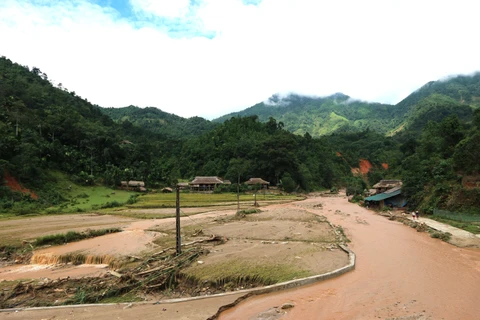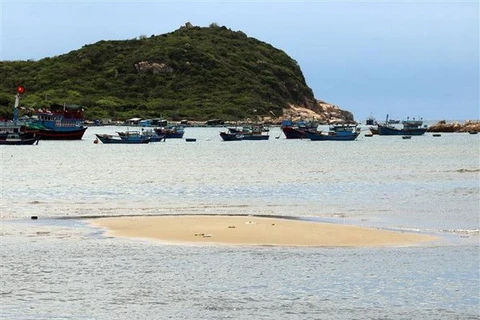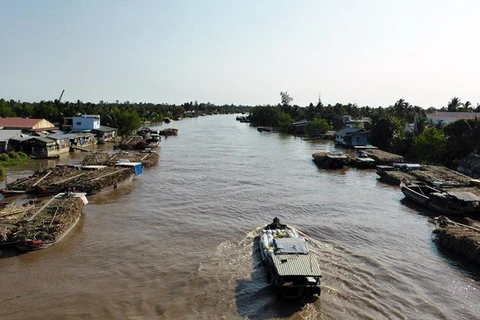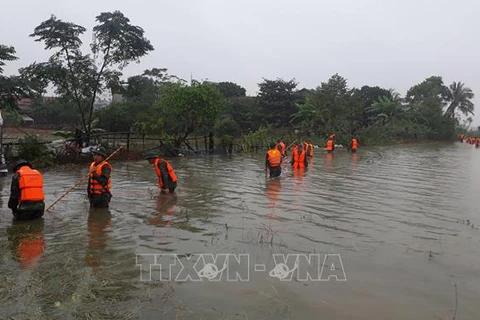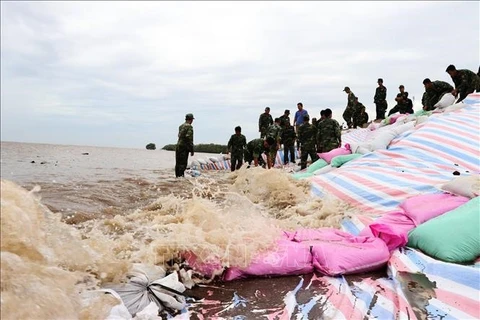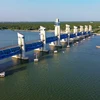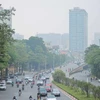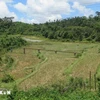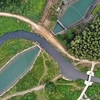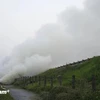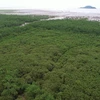 Traffic is blocked after a landslide in Sa Pa district, the northern mountainous province of Lao Cai last month (Photo: VNA)
Traffic is blocked after a landslide in Sa Pa district, the northern mountainous province of Lao Cai last month (Photo: VNA) Hanoi (VNS/VNA) - Vietnam has more than 10,200 sites prone to landslide risks located in ten northern mountainous localities, according to the Vietnam Institute of Geosciences and Mineral Resources under Ministry of Natural Resources and Environment.
Trinh Xuan Hoa, deputy head of the institute told Vietnam News Agency that landslides and flash floods that cause serious consequences of human losses and property damage frequently occur in the recent years in provinces of Lao Cai, Son La, Yen Bai, Hoa Binh, Lai Chau and Thanh Hoa.
Abnormal weather conditions such as prolonged torrential rain and human activities including deforestation, mineral exploitation, construction are the main causes of landslides, threatening community safety.
Flash floods and landslides in June last year in northern mountainous localities swept away 176 houses, damaged 1,270 others and destroyed more than 1,000ha of rice fields. As many as 33 people died and went missing. The total damage was estimated at some 535 billion VND (22.8 million USD).
During the 2000-15 period, there were 250 flash floods and landslides nationwide with 779 people being killed or going missing, 426 others injured. Economic losses were up to dozens of trillions of dong, according to Natural Calamity Prevention and Control General Department.
Dr Nguyen Duc Manh from the University of Transport and Communications said that Vietnam has had a number of geological studies on landslide risks and mapped landslide areas, however, a lot of managers lack attention to landslides.
“When each rainy season comes, many areas are put on the red alert of landslides like Xin Man town of Ha Giang province. Although the disaster risks have been pointed out by researchers and the Government has ordered natural disaster prevention, reduction and responding plans, localities remain passive in addressing the problem due to lacking budget,” he said.
“We are fixing landslides at single points where buildings or traffic infrastructure are located. Most of landslides are fixed only when they happen but we have not thought about sustainable solutions for the whole residential areas,” he said.
Deputy head of the Vietnam Institute of Geosciences and Mineral Resources Trinh Xuan Hoa said that landslides can be prevented by planting more trees in protective forests, recovering natural forests, stopping planting trees for exploitations purposes and not building residential areas near landslide risk-prone sites.
Local people should be aware of how to respond to and reduce damages caused by landslides during rainy season. Alert devices must be installed at areas prone to high risks of flash floods and landslides, he said.
According to Hoa, there are several solutions to relocate residents from areas prone to landslides. One of them is to move risk-prone people to live in safe community. This solution does not need much infrastructure investment but requires local authorities to offer assistance to people newly moving in.
Another solution is to map safe zones and move all risk-prone residents to resettlement areas. But this solution needs local land space.
In case there are no land funds, local authorities should build dams, embankments and plant protective forests to reduce natural calamity damage.
The Institute of Geosciences and Mineral Resources has completed landslide map for 18 out of 37 northern mountainous areas and is doing more research to update communes’ landslide details which serve as a reference for localities to relocate residents out of risky areas.-VNS/VNA
VNA
